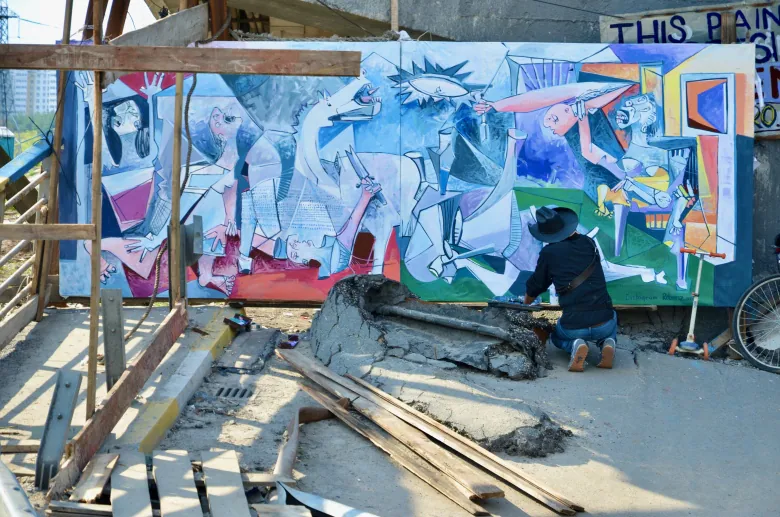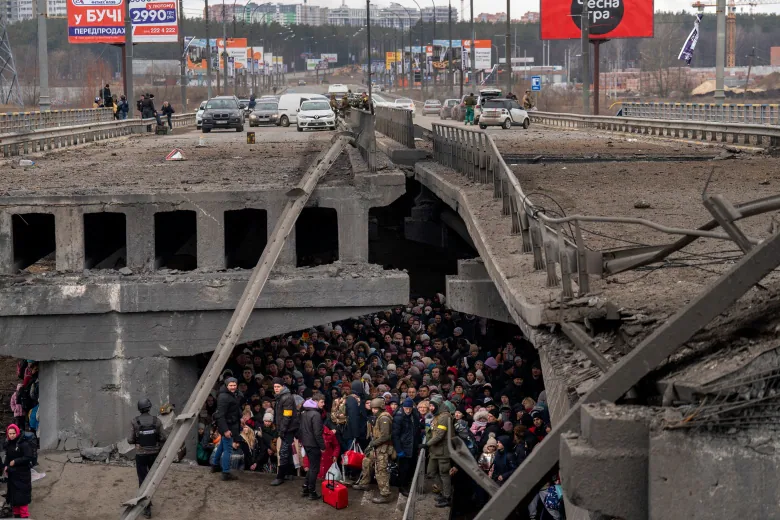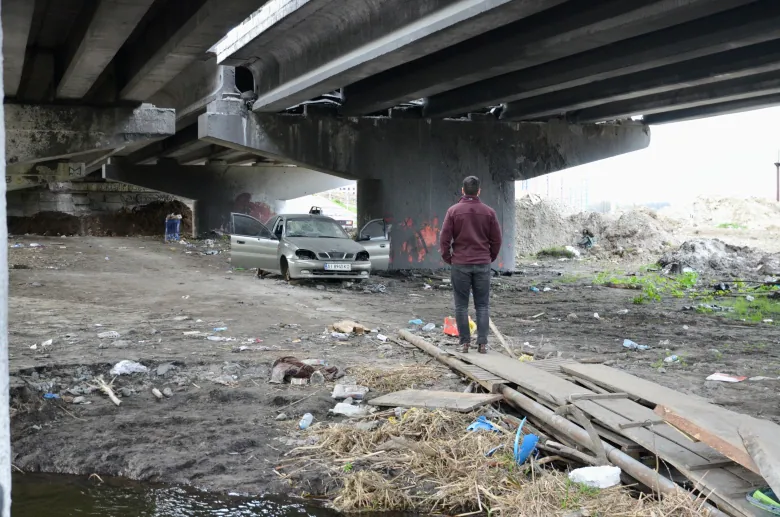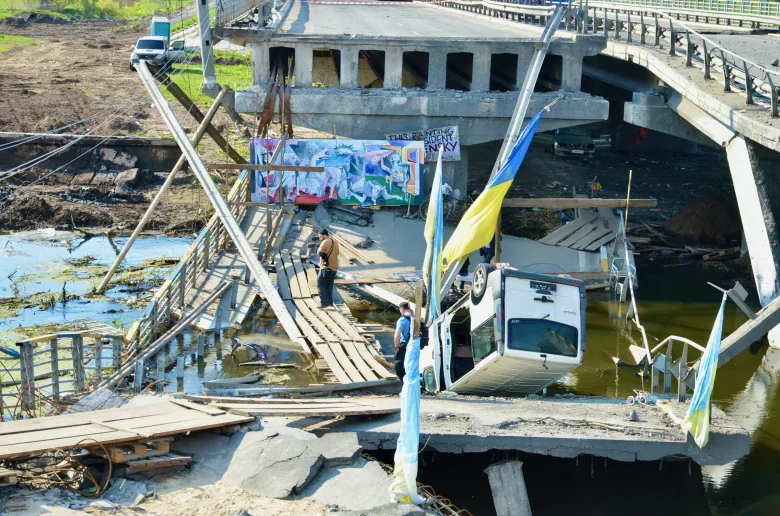Roberto Marquez is living with eight volunteers on the dark, ruined outskirts of Kyiv.
Every day, first thing in the morning, four of his newfound friends go and help others dig bodies out of temporary graves — the horrible legacy of the nearly month-long occupation of Irpin by Russian troops.
While they dig, Marquez, 60, picks up his brushes and begins to paint.
He is creating a giant canvas — a tribute to Guernica, Pablo Picasso’s celebrated anti-war painting crafted in response to the terror-bombing of civilians during the Spanish Civil War.
War has a tendency to attract unusual characters — the tourists, the thrill-seekers, the unfulfilled and the thoughtful.
Marquez, who lives in Dallas, Texas but is originally from Mexico City, falls into the latter category — a man upon whom the suffering of others makes a deep, abiding impression.
Every day, Marquez puts on his black cowboy hat and the bandolier belt that carries his brushes before walking down to the now-calm waters of the Irpin River, the scene of desperate winter clashes between Ukrainian soldiers and invading Russians on the edge of the capital Kyiv.

Gingerly, Marquez steps among shattered concrete slabs and spaghetti-twisted rebar, over a series of wooden planks, to the thick, leaning skeleton of what was once the local bridge leading to Kyiv. The locals call it the “bridge of death”.
Once there, Marquez begins work on his canvas.
As Russian troops bore down on Kyiv in early March, Ukrainian sappers blew the Irpin bridge to slow the relentless advance. That didn’t stop panicked local residents from, in the days afterward, trying to flee to safety on the opposite bank over the tangled remains.
A photo of hundreds of cold, exhausted, frightened people cowering under the bridge’s smashed foundations to avoid sniper and mortar fire became instantly iconic in the early days of the war. As many as 290 civilians died in Irpin last winter.

From here, Marquez draws his inspiration.
“When I come on site, I am facing … I come on top of reality,” he said in a recent interview with The Canadian News at the bridge where he has set up his giant canvas. “I cannot paint in a studio. For me, painting [in] a studio is a practice, not a finished piece.”
This vantage point among the ruins, he said, makes Irpin’s story “real” to him.
It doesn’t get any more real than the scene around the corner from where his canvas leans against the crumbling concrete base: a gray BMW with bullet holes and a shattered windshield, its passenger doors flung wide open. The car was used repeatedly to ferry people out of Irpin to the bridge until its owner was shot by the Russians, Marquez said.

Behind him sits a white mini-van flipped onto its roof, teetering on the edge of the river.
Marquez said he was drawn to Ukraine by President Volodmyr Zelensky’s call for a foreign legion of volunteer fighters. After arriving, and after volunteering with the Red Cross at the Polish border for a couple of days, Marquez found his lack of military experience made him ineligible to fight.
Undeterred, he continued volunteering until he worked his way to Kyiv and then out to Irpin, about 20 kilometres north of the capital.
He said he was left numb by the trail of the destruction left by the Russians.
“They didn’t destroy every house, every building, but they went to every street and there’s bombing everywhere,” Marquez said.
‘We shouldn’t be here’
He said the scene made him think of Guernica, one of the most influential anti-war paintings of the last century. The oil painting on canvas, created at the height of Spain’s civil war in the late 1930s, is one of Picasso’s best-known works.
Marquez said he chose to paint in Picasso’s style “because what happened in 1937 is just repeating again.”
Outdoors, often alone with a tray of paints, Marquez has a lot of time to think and reflect.
“I’m kind of losing hope for our new generation,” he said. “How do we prevent this from happening? I mean, this, this shouldn’t be, we shouldn’t be here. This is … there was no need for this.”

Among the grey, bent rails and crumbling concrete, Marquez’s canvas is a splash of colour visible from the broken road above.
The mayor of Irpin, Oleksandr Markushyn, has taken notice; Marquez said he’s been told his work will have a place in the town, either in a city administration building or the cultural centre, which was heavily damaged after being deliberately targeted by Russian artillery.
Reference-www.cbc.ca